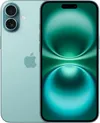Apple Intelligence on the iPhone: A lot of promise but no must-have features
Apple's AI is not a game-changer — yet
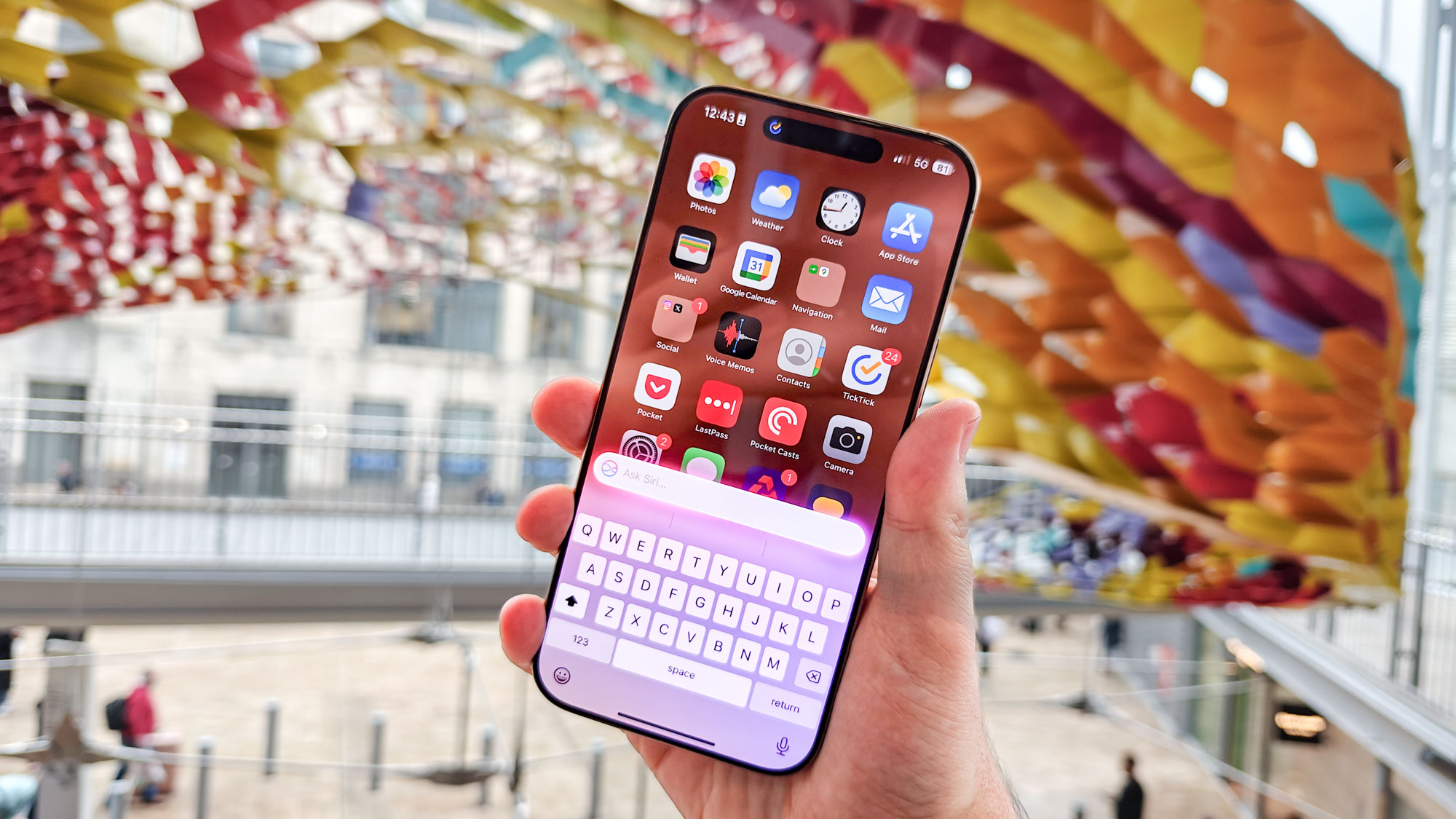
Install the newly released iOS 18.1 update on certain phones, and you'll enter the brave, new world of Apple Intelligence. You'll notice it looks a lot like the old, familiar world without Apple Intelligence.
Not to undersell the significance of Apple's first batch of AI-powered tools going live on the iPhone — and other devices if you install the new software updates for iPads and Macs — but the features now available to the iPhone 15 Pro, iPhone 15 Pro Max and every iPhone 16 model don't really break new barriers to much as they extend capabilities already available on the phone.
That's not necessarily a bad thing. In my experience, the best AI tools fit seamlessly into what you already do on a particular device rather than force some new feature upon you that you don't really need. And in that sense, Apple Intelligence succeeds with improvements to Mail, Photos and Notes that do the things you already do on your phone only better.
But it's not very attention grabbing, especially given the piecemeal way Apple is rolling out Apple Intelligence changes. iOS 18.1 brings us new writing tools, some significant Photos changes and the initial parts of a Siri overhaul. iOS 18.2, already in beta for developers, is bringing more features like emoji generated by text prompts, other generative image creation tools, and a Visual Intelligence feature just for iPhone 16 users. Introducing new AI features bit by bit gives Apple the space to fine-tune Apple Intelligence capabilities before they reach a wide audience, but they also increase the chances of someone installing another incremental update and wondering if that's all there is.
And in a way, the answer to that question is yes. Yes, that is all there is, for now. But what is there is certainly worth exploring.
Apple Intelligence: The best features so far
Everyone's going to have their own favorite Apple Intelligence features, and I've certainly detailed my favorites. But what I'd like to do here is call out the most polished Apple Intelligence features thus far, and the ones that will fit easiest into your current workflow.
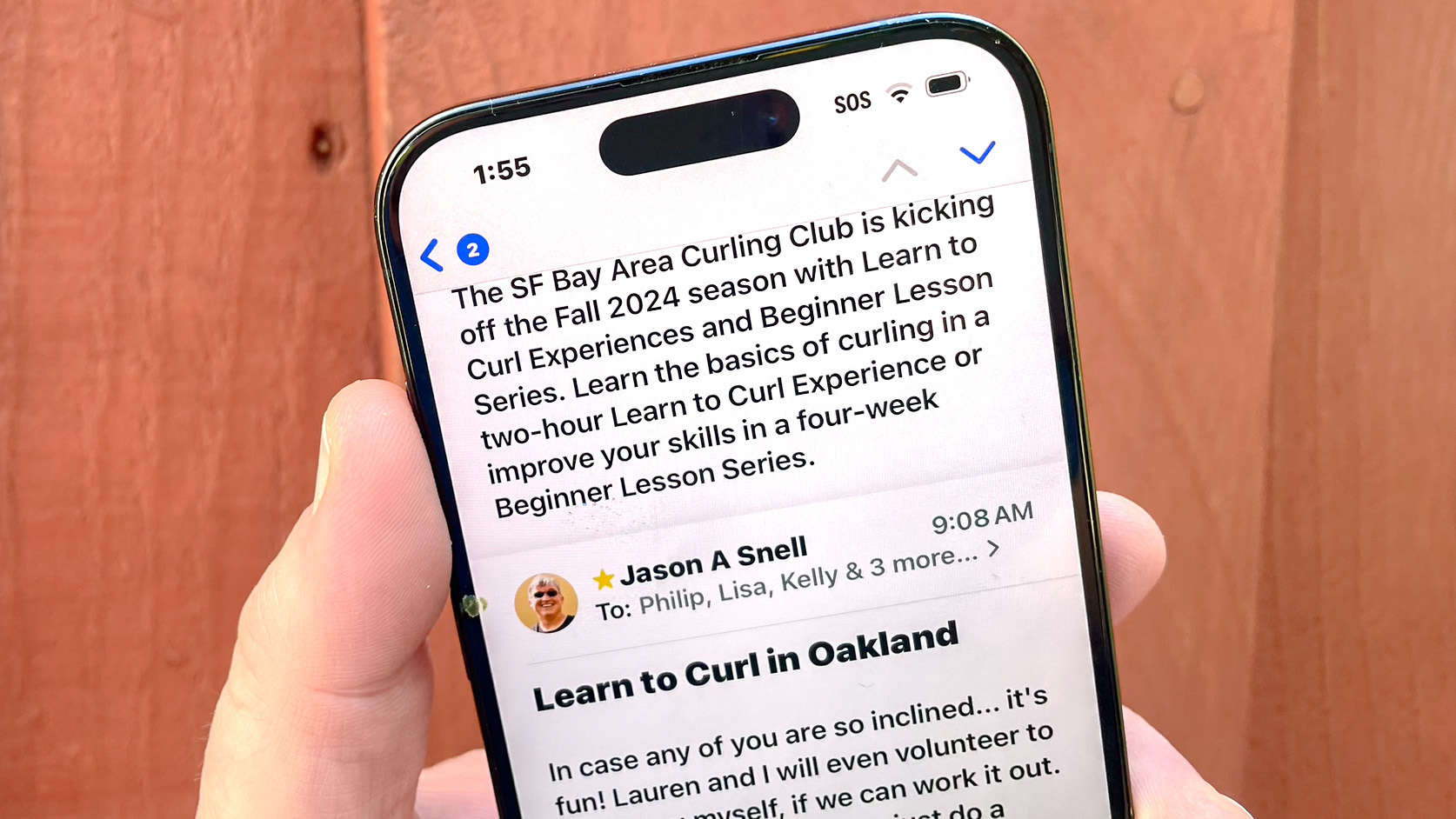
Nearly every Apple Intelligence change to the Mail app is a winner starting with priority mail, which floats messages to the top of your inbox when the AI detects that there's a deadline or a call to action you need to respond to ASAP. Priority emails are set apart from the rest of your inbox — a great visual indicator that makes it very hard to miss an important message.
Get instant access to breaking news, the hottest reviews, great deals and helpful tips.
Most of the messages in your inbox no longer show the first couple lines of the email; instead, Apple Intelligence whips up a summary of what the message is about. This not only gives you the gist of incoming messages, but it makes finding specific messages touching on a given topic a lot easier to do. My only complaint is that Apple only shows two lines of a summary, instead of the full summary — I'd prefer the latter.
Like a lot of apps in Apple Intelligence, Mail gains a summary tool, with a summarize button appearing at the top of each message. This comes in especially handy when you've got a multi-message thread in which several different people are weighing in, as the summary tool pulls out the key points of the exchange for your perusal. Summaries save you the trouble of having to parse a lot of different messages to get the gist of what's being discussed; it's also great for confirming that you're about to dive into the right email exchange.
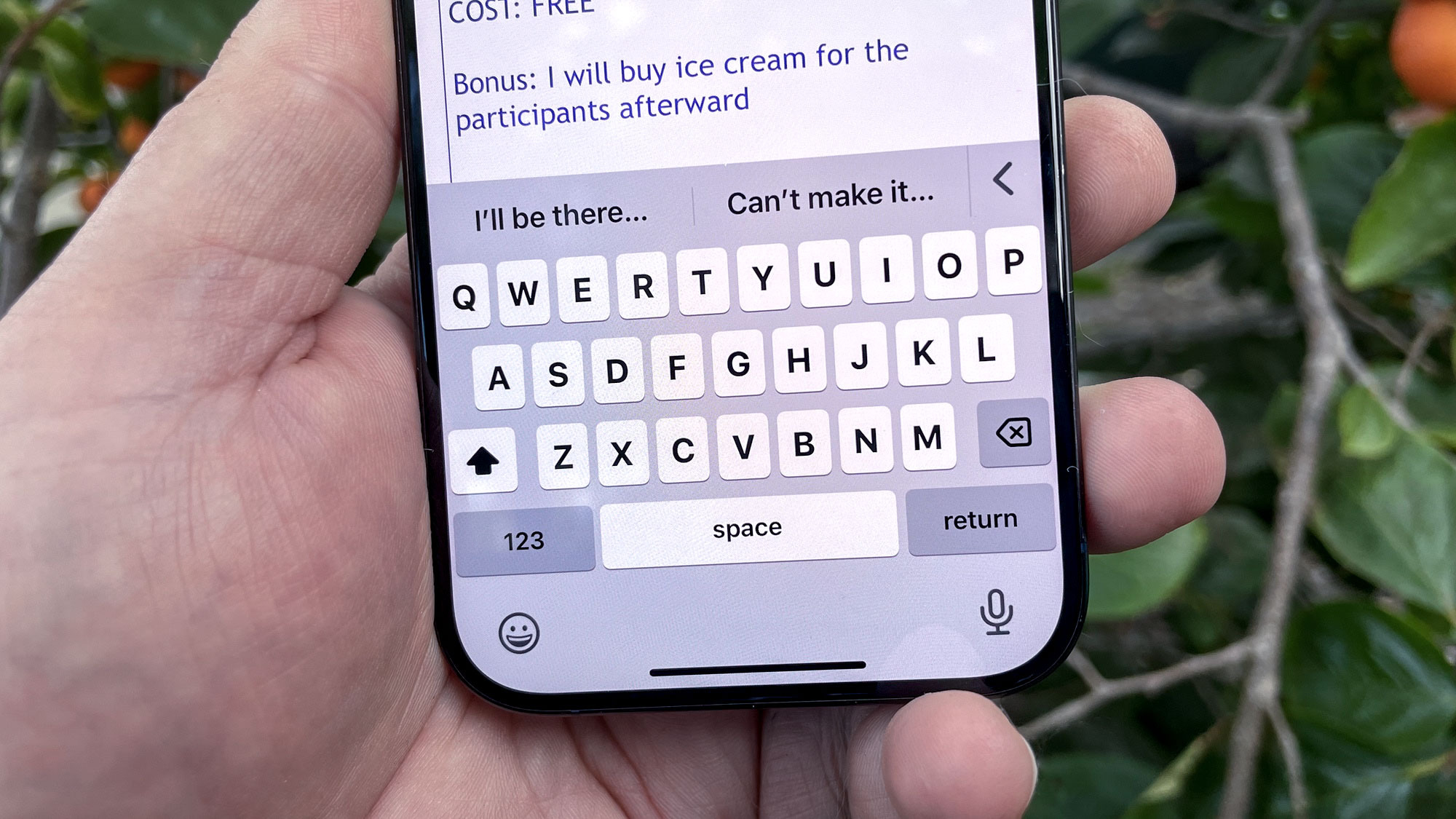
Finally, there's smart replies, a feature that's a lot more powerful than what Google implemented long ago with Gmail. Apple's version add additional prompts when it detects deadlines so that your auto-generated response actually addresses the issue at hand.
Photos
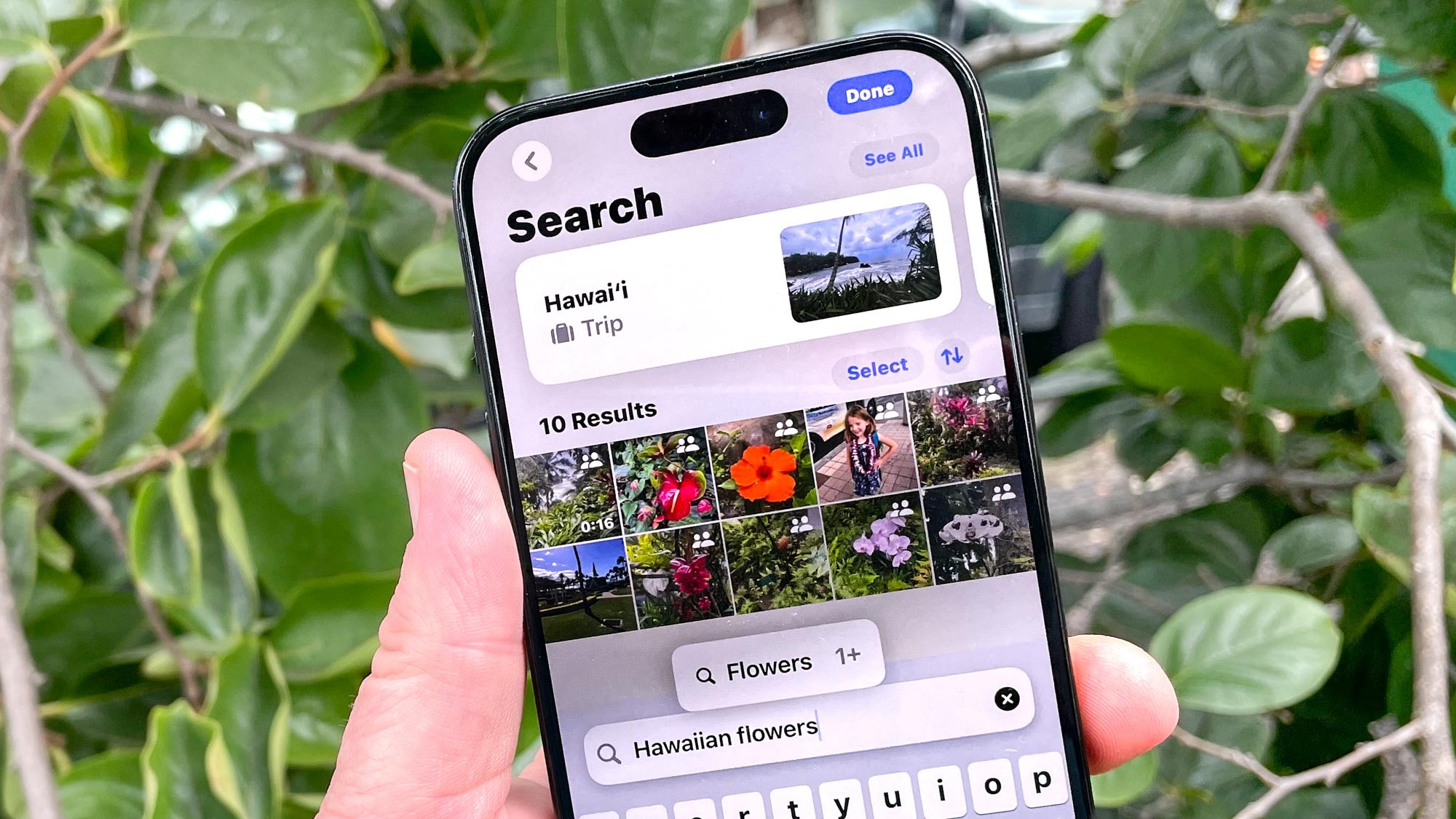
Other than Mail, the Photos app sees the most significant changes from Apple Intelligence, starting with search. You no longer have to struggle with coming up with the right keywords to track down a particular photo — just type in exactly what you want to find like "photos of my last vacation in Hawaii" or "my daughter dancing ballet."
I've been able to find things much easier since upgrading to iOS 18.1, and this is one Apple Intelligence tool that seems to have trickled down to iPhones that don't necessarily support the feature. (Photo searches are nearly as thorough on my iPhone 12 as they are on the iPhone 15 Pro i've been using to test Apple Intelligence.)
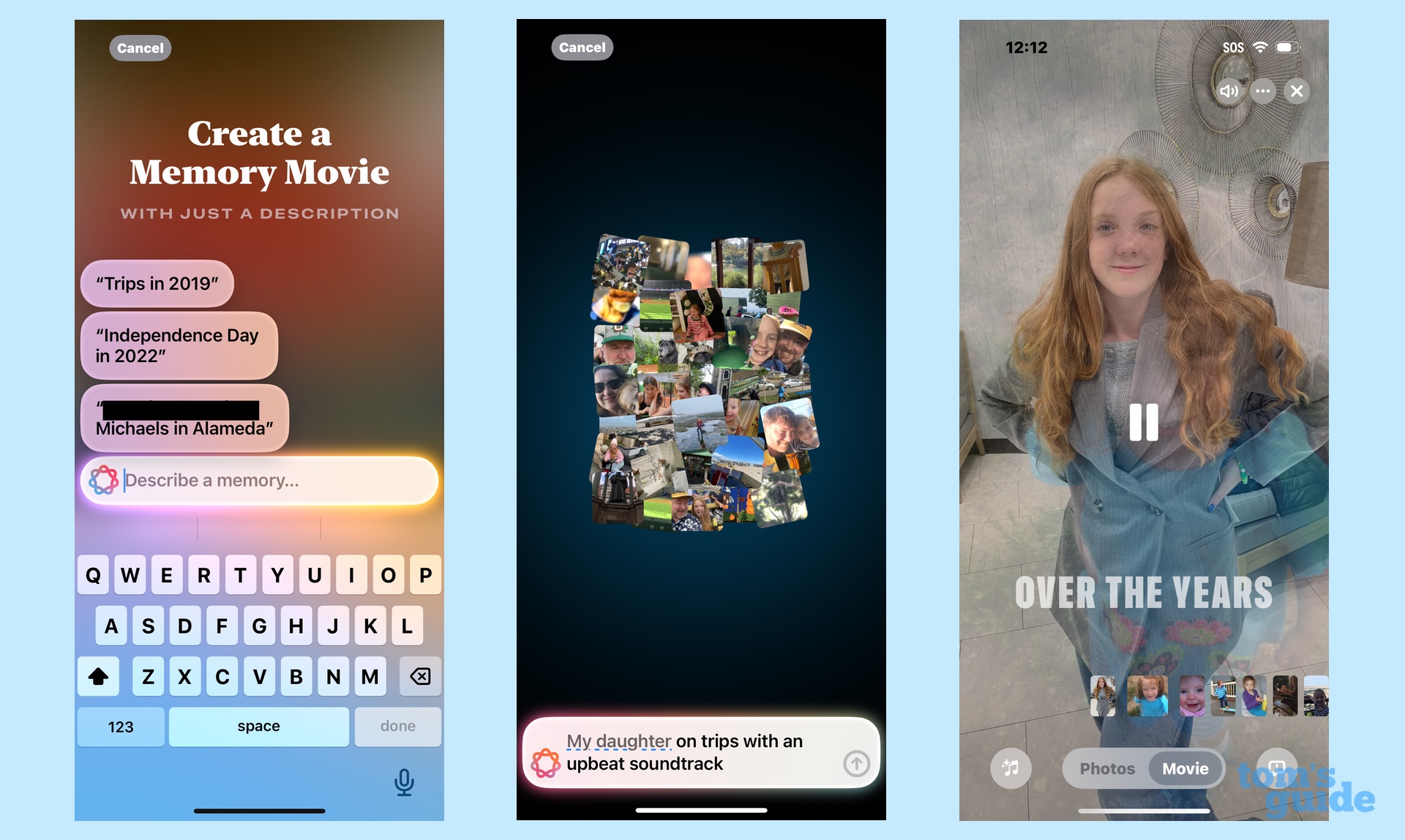
I like the idea behind Memory Movies, in which you type in a text prompt — "my daughter swimming at the lake" — and Apple Intelligence whips up one of those Memory slideshows you find in the Photos app, complete with its own soundtrack. (Incidentally, you can suggest music styles to accompany your Memory Movie, and if you subscribe to Apple Music, your library of musical selections expands considerably.) However, this may be a situation where Apple over-promised, as its Apple Intelligence preview page mentions narrative arcs for the slideshows. I have noticed anything like that at all.
You may find yourself tweaking the Memory Movie, removing photos that don't really fit the the theme or supplying a title to replace the anodyne one Apple Intelligence whipped up. That removes some of the wonder of the feature, but overall, Memory Movie is a fun way to revisit photos and videos that may otherwise be tucked away deep in your library.
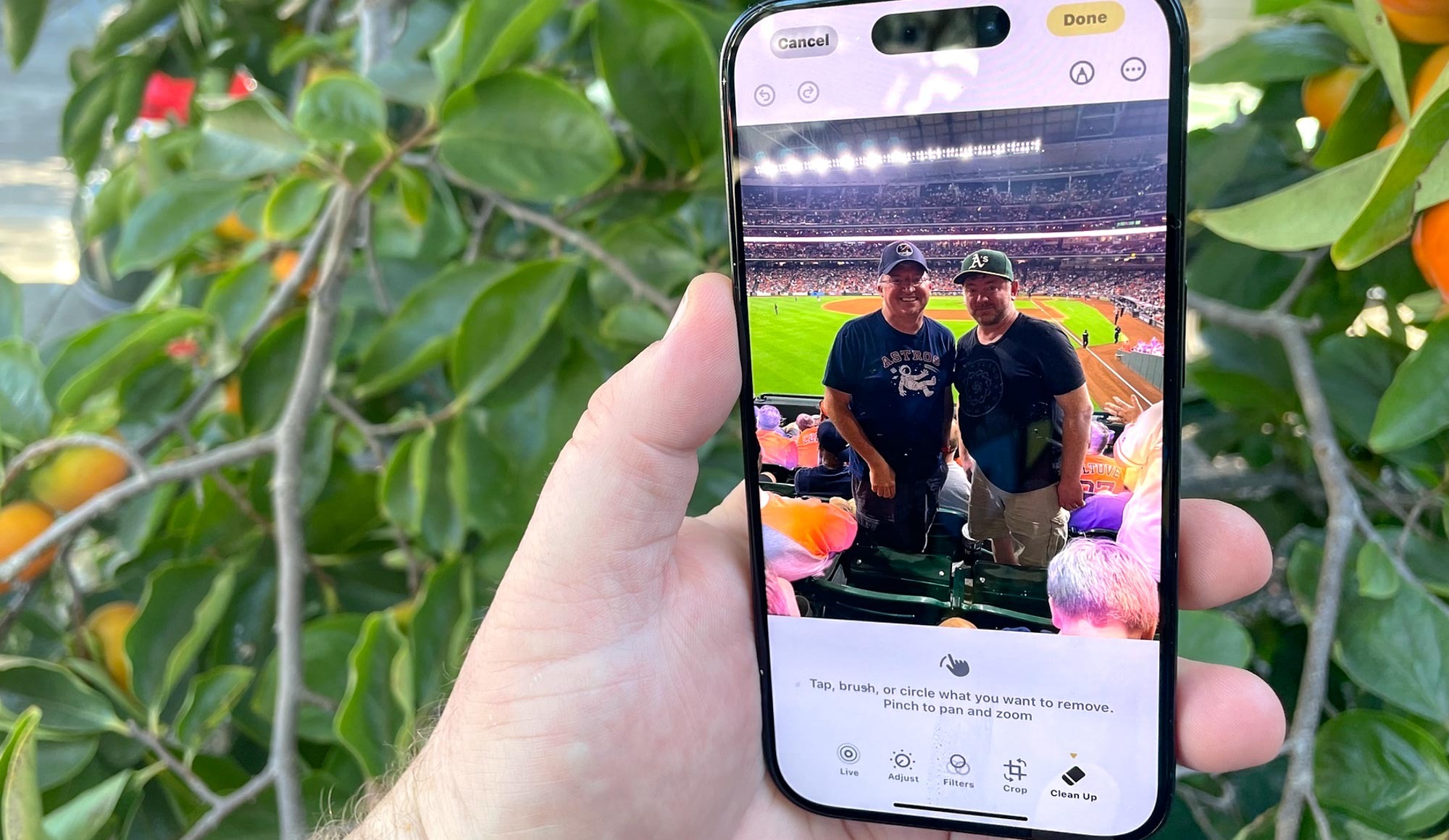
Finally, Photos features a Clean Up tool that's very similar to the Magic Eraser that's been a part of Google's phones the last several years. Like Magic Erase, you use clean up to remove unwanted people or objects from a photo with a tap.
I find that Clean Up works well enough, though it's more likely to leave behind traces of what you've removed than similar editing tools. But in an era where AI-powered photo editing is pretty much de rigueur for phones with AI ambitions, the iPhone finally has a tool of its own.
The Professional tone in Writing Tools
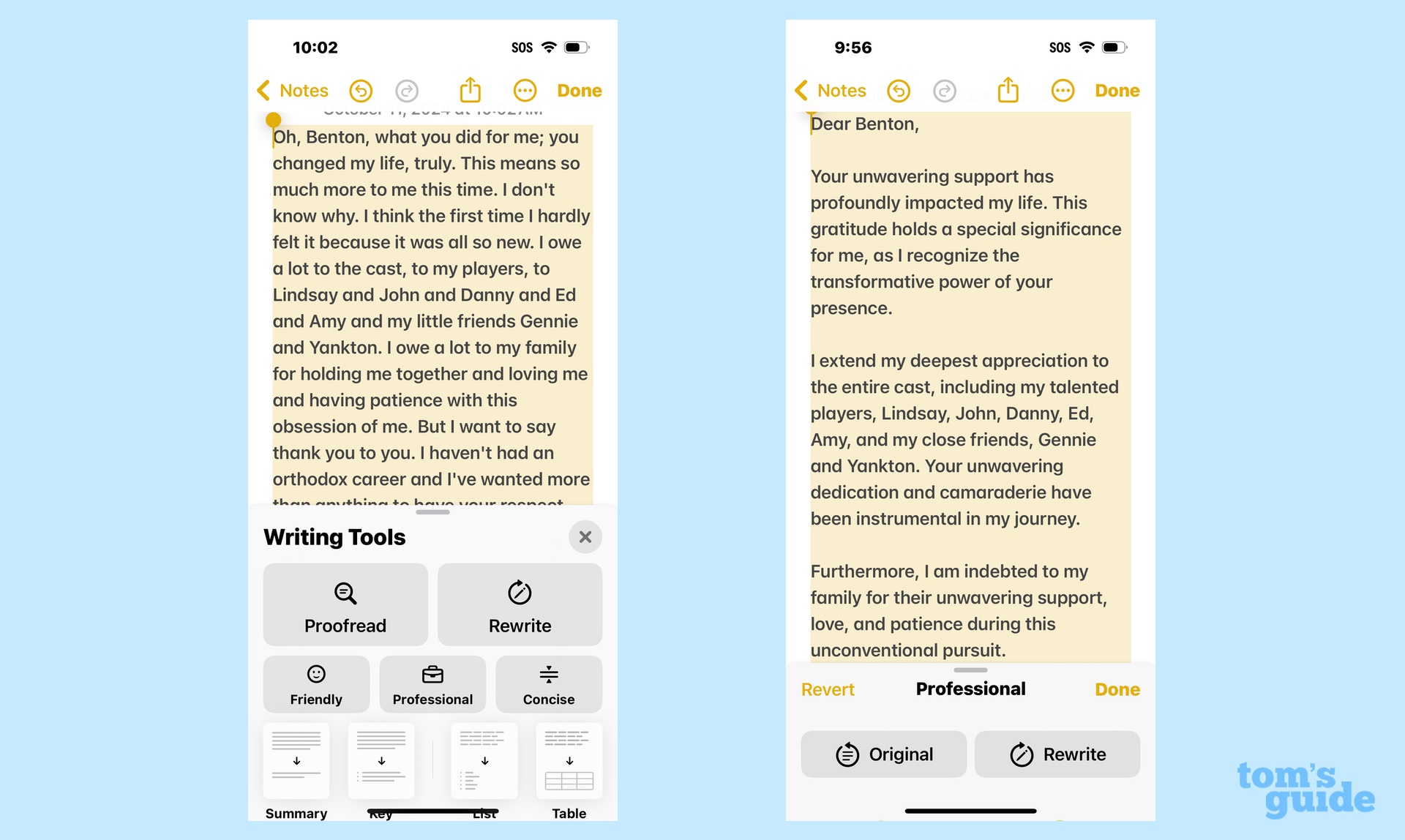
We'll get to Writing Tools in a bit, and not for reasons that Apple will probably like. But I did want to single out the Professional tone feature for praise, as it's really well done.
Writing Tools are available in any app that accepts text input, even third party apps. They're made up of different features meant to improve your writing, whether it's a proofreading tool, another button that condenses your text or ones that suggest different tones. The Professional tone is the best of the bunch, as it can take highlighted text in apps like Notes, Mail and more and make it sound very formal. I see this as a great tool for polishing a cover letter or business proposal — write the text in your words and then turn to the Professional tool to clean things up.
Even those of us who write professionally might struggle with the very rigid structure that business writing demands. The Professional tone feature in Writing Tools can improve that skill set, so it's a very welcome addition to the iPhone.
Apple Intelligence: What still needs work
With one exception that we'll get to, I don't think there are any Apple Intelligence features that are outright misses. That said, there are ones that require additional fine-tuning by Apple.
Transcriptions
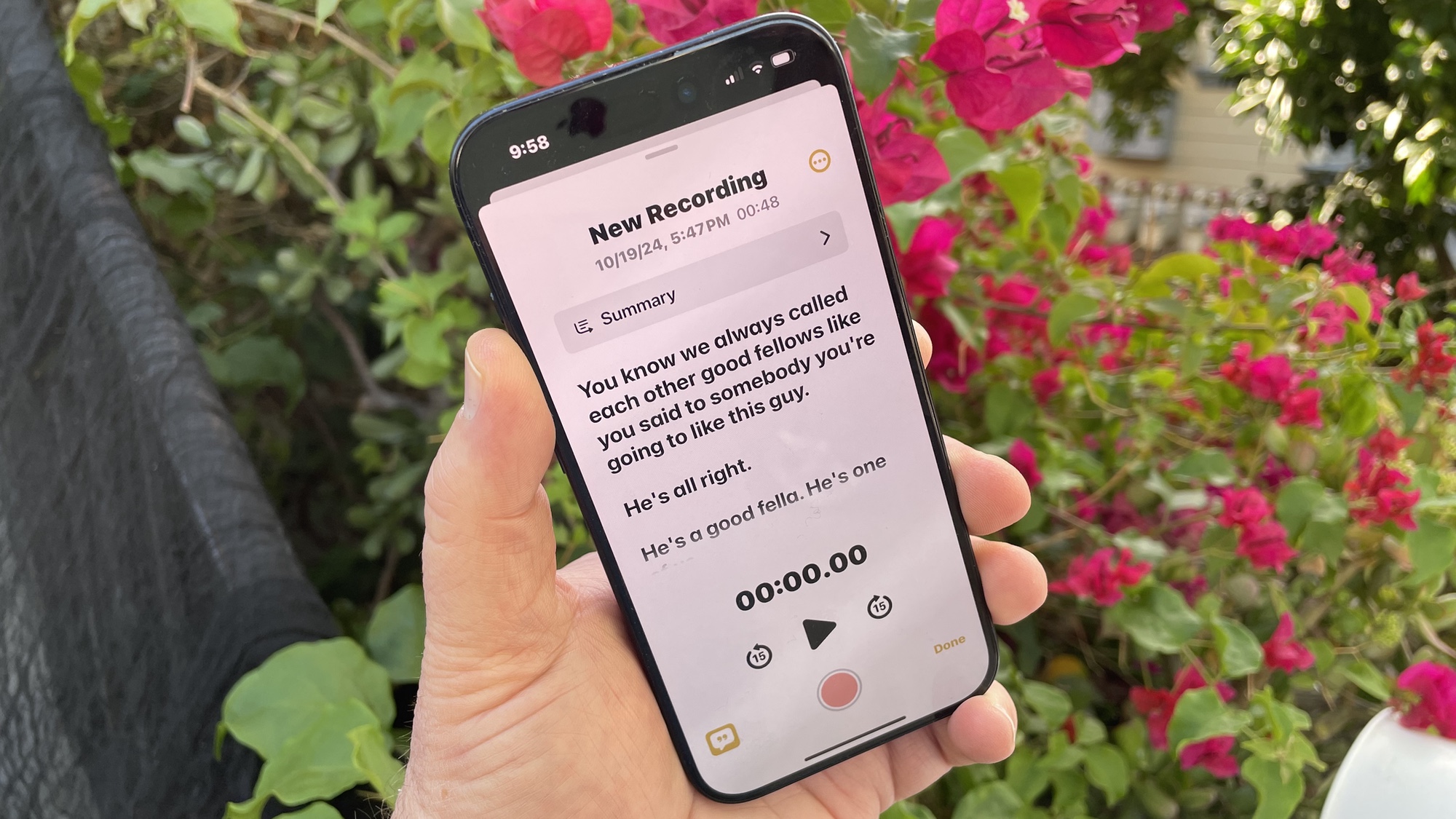
Transcribing audio — whether it's a recording from the Voice Memo app, a recorded phone call or an audio note you've created directly in Notes — isn't necessarily an Apple Intelligence feature. You can get transcripts of recordings on any device running iOS 18, with summaries of those recordings limited to Apple Intelligence-ready iPhones. But there is some on-device AI involved in transcribing audio, and right now, it's more miss than hit.
Transcriptions work well enough when the person making the recording speaks clearly, slowly and audibly. But that's not often the case in the scenarios where you're likely to make recordings such as meetings, lectures and phone calls. Apple's transcription tools are easily tripped up by regional dialects and accents, and heaven help if two people decide to speak at once. It's something that will doubtlessly get fixed over time, but be prepared to do lots of clean up work on your own if you plan on using this feature.
Siri improvements
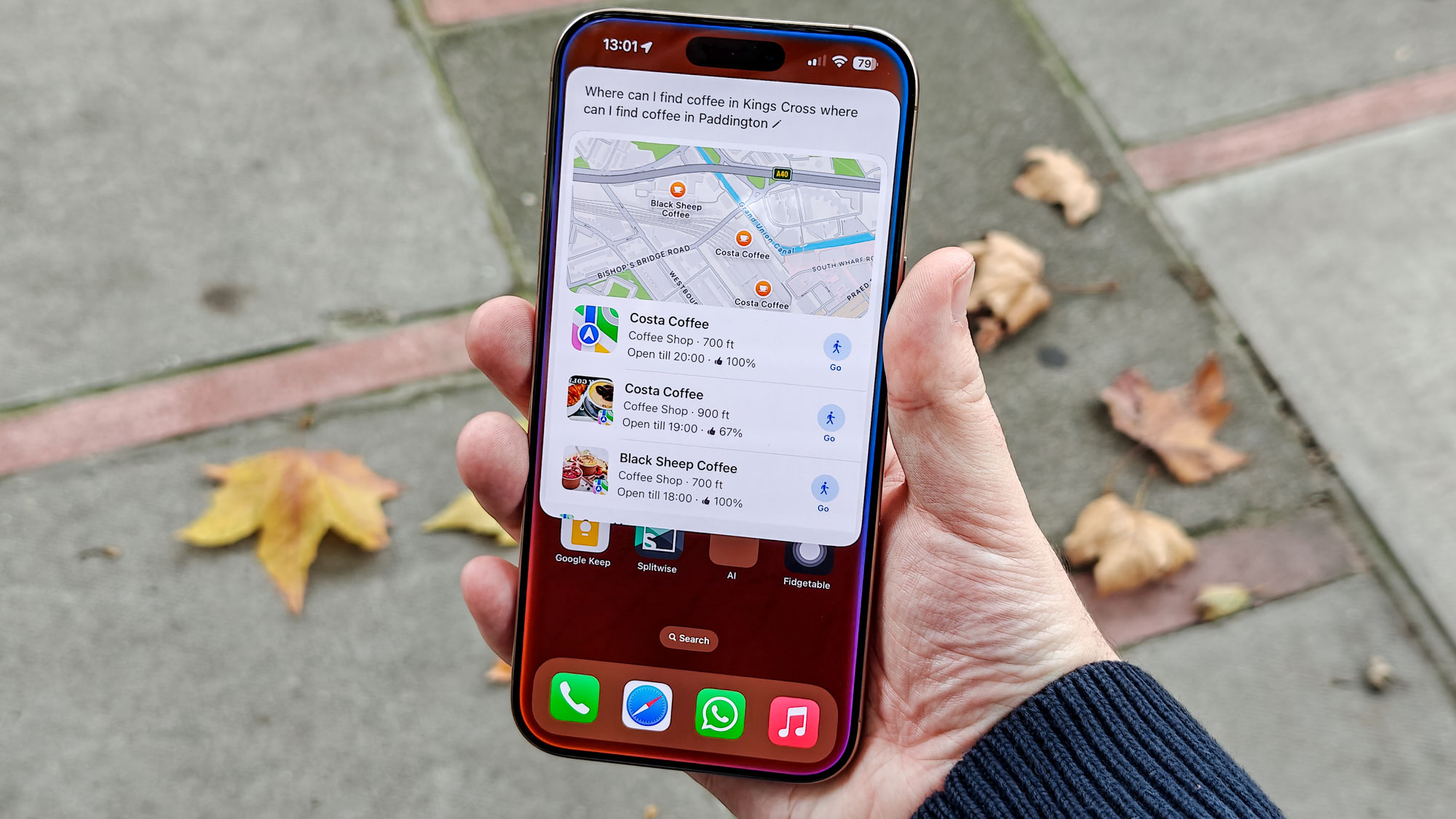
Apple would be the first to tell you that the work of making a better, more context-aware Siri has only just begun. Indeed, we probably won't see the full improvements to Siri promised at last June's WWDC event until we're well into 2025. So approach the digital assistant in iOS 18.1 with that caveat in mind.
You will find a more forgiving Siri in iOS 18.1. You can correct yourself mid-query without confusing the assistant, and Siri responds a lot better when you cut it off mid-reply. Even better, Siri has a better understanding of the context of your questions. Ask the assistant what's the weather like in Barcelona, and Siri will give you the current conditions. Follow that up with "And what it's like for the rest of the week?" and Siri will understand you want a multi-day forecast for Barcelona, even if you didn't specify the city. Ask "What about Madrid?" and Siri still knows you're asking about the weather.
It's great when it works, but Siri can get tripped up. Usually when I ask the assistant multiple questions about a particular sporting event, it's good for about two questions before it gets confused and gives me irrelevant or incomplete information. Siri's getting smarter, but it still needs some schooling.
Writing Tools
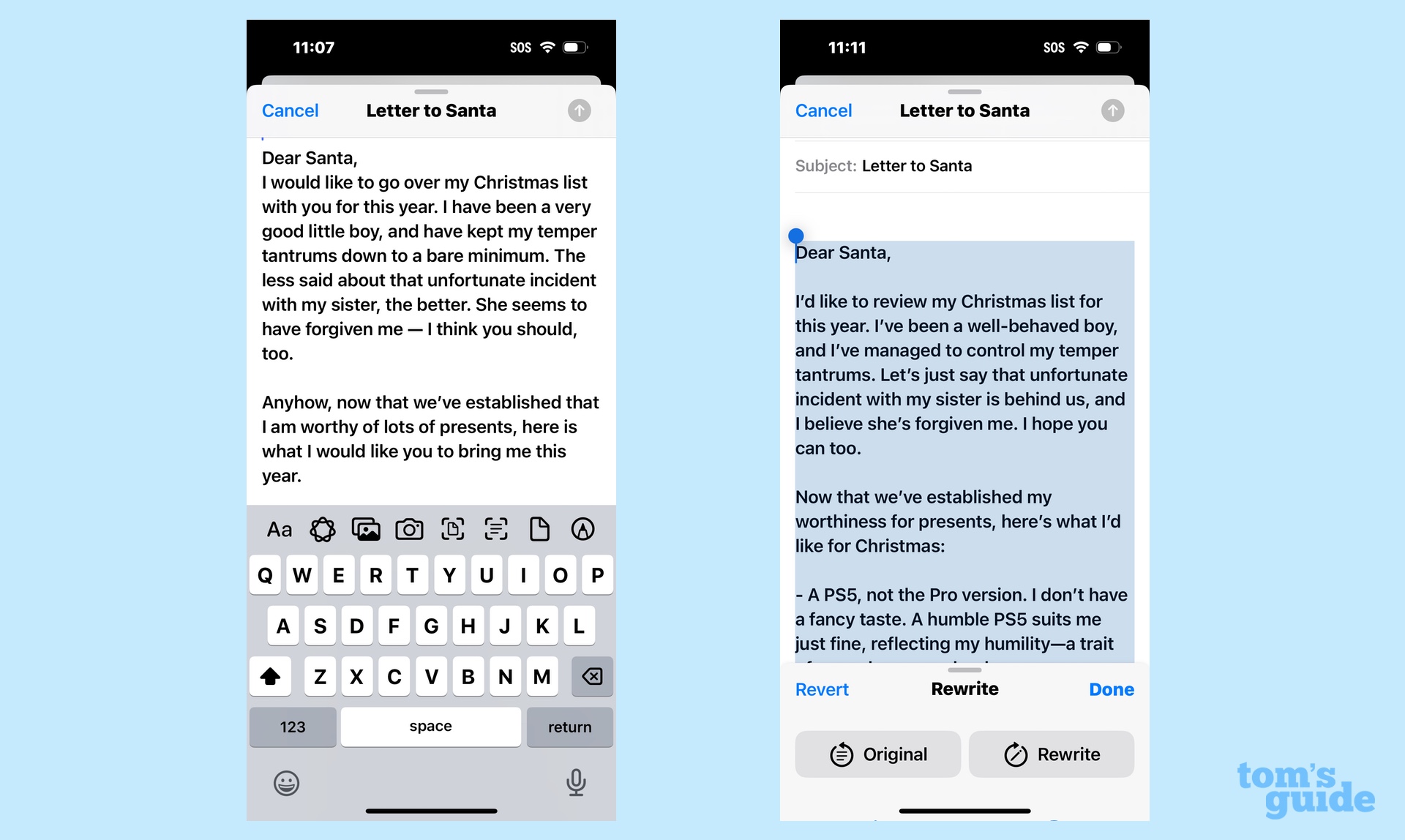
As much as I praised the Professional tone feature in Writing Tools, I'm less sold on the other parts of this particular suite of AI-powered writing assistants. The proofreading feature works well enough and the Friendly tone might save you from sending an overly aggressive email if you have the presence of mind to use it before hitting send. But a button that condenses your writing can strip out important details in the interest of saving space. I wouldn't rely on that without triple-checking Apple Intelligence's work, kind of defeating the purpose of a feature that's meant to save you time.
It's the Rewrite button in Writing Tools that I really have no use for. The purpose of the Rewrite button seems to be "swap in synonyms whether they're contextually appropriate or not." Rewrite will also remove any last trace of personality from something you've written, putting generic text in its place.
I've yet to see the Rewrite tool produce anything that didn't sound like it was written by a robot. Unless that's the impression you're hoping to give, I would steer clear of using that particular part of Writing Tools.
Apple Intelligende: Worth the upgrade?
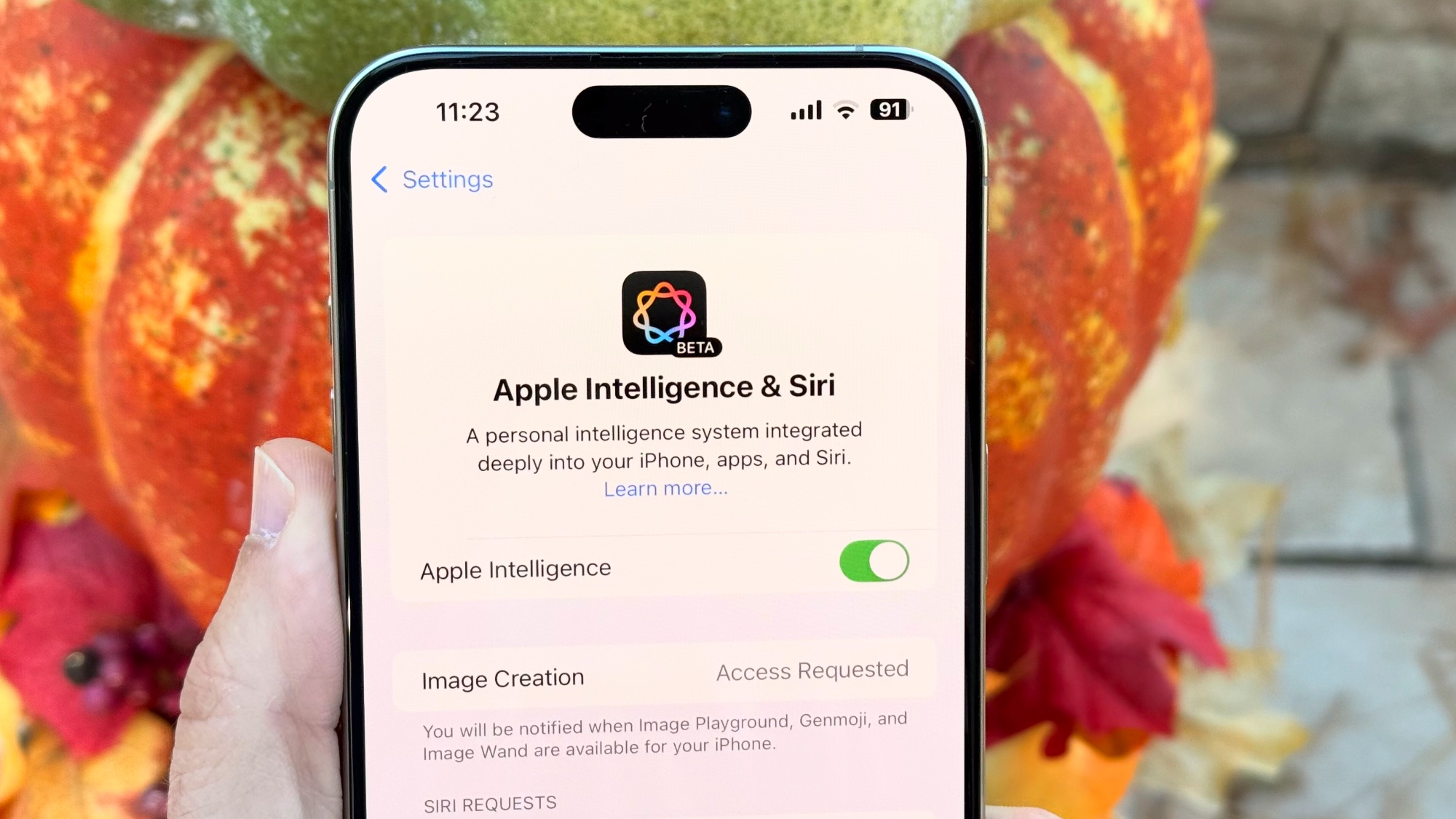
There was some speculation among analysts who track Apple as to whether the release of Apple Intelligence will convince people to upgrade to a new iPhone — specifically the iPhone 16 models, as that's what's on sale now. There are certainly strong arguments to be made for getting an iPhone 16, whether it's the better battery life, improved performance and excellent-as-always cameras; the arrival of Apple Intelligence wouldn't even crack the top 10 reasons to get a new phone.
That may come across as an overly harsh assessment, since the Apple Intelligence tools introduced in iOS 18.1 fall neatly under the "nice to have" banner. But "nice to have" isn't "must have," and I don't think anything Apple Intelligence offers at this point rises to the level of the latter.
The way I see it, if you have an iPhone that's currently capable of supporting Apple Intelligence, you'll find some use out of the new features your phone has just picked up. And if you don't, you'll probably get by until you are ready to upgrade your phone — by then, Apple Intelligence is almost certain to have added more features than what's available now.
Even though it just arrived, Apple Intelligence continues to be mostly about promise. A better iPhone experience is coming because of Apple Intelligence, though you may find some use out of the tools that are there now.
More from Tom's Guide
- I tried all new Apple Intelligence features in iOS 18.1 — here’s the best (and worst)
- I just tried Visual Intelligence on the iPhone 16 — this is actually upgrade worthy
- iPhone 16 vs. iPhone 16 Pro: Which model should you get?
Philip Michaels is a Managing Editor at Tom's Guide. He's been covering personal technology since 1999 and was in the building when Steve Jobs showed off the iPhone for the first time. He's been evaluating smartphones since that first iPhone debuted in 2007, and he's been following phone carriers and smartphone plans since 2015. He has strong opinions about Apple, the Oakland Athletics, old movies and proper butchery techniques. Follow him at @PhilipMichaels.









